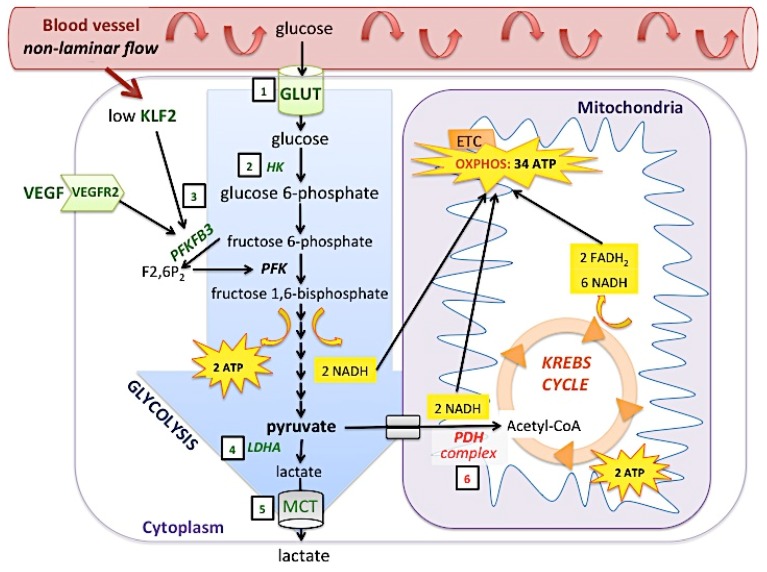Figure 5.
Glucose metabolism is regulated by hypoxia-inducible factors (HIFs). During glycolysis, glucose enters the cytoplasm through the glucose transporter (GLUT) and is transformed into glucose 6-phosphate by hexokinase (HK). Eight successive enzymatic reactions then occur to produce 2 molecules of pyruvate, 2 ATP and 2 NADH. At the end, cytosolic pyruvate has two possibilities: transformation into lactate by the enzyme lactate dehydrogenase A (LDHA)—lactate being then exported through the monocarboxylate transporter (MCT), or transferred into the mitochondria and transformed into Acetyl-CoA via the pyruvate dehydrogenase complex (PDH complex). In the second option, Acetyl-coA goes into the Krebs cycle to produce 2 ATP, 6 NADH, and 2 FADH2. NADH and FADH2 will further be used in redox reactions in the electron transport chain (ETC) to produce more ATP via oxidative phosphorylation (OXPHOS). HIF intervenes in several steps during glucose metabolism: by inducing GLUT it allows more entry of glucose (1) and by inducing hexokinase (2) and PFKFB3 (3), it enhances glycolysis. Note that non-laminar blood flow decreases the expression of Kruppel-like factor 2 (KLF2), which has otherwise an inhibitory action on HIF-1 and PFKFB3 expression. VEGF and its receptor VEGFR2 are also induced by HIF-1 and enhance PFKFB3 expression. Further, pyruvate is pushed towards lactate transformation by up-regulation of LDHA (4) and some isoforms of MCT (5). At the same time, HIF prevents the PDH complex from transforming pyruvate into Acetyl-coA (6). Green: activation by HIF, Red: inhibition by HIF.

